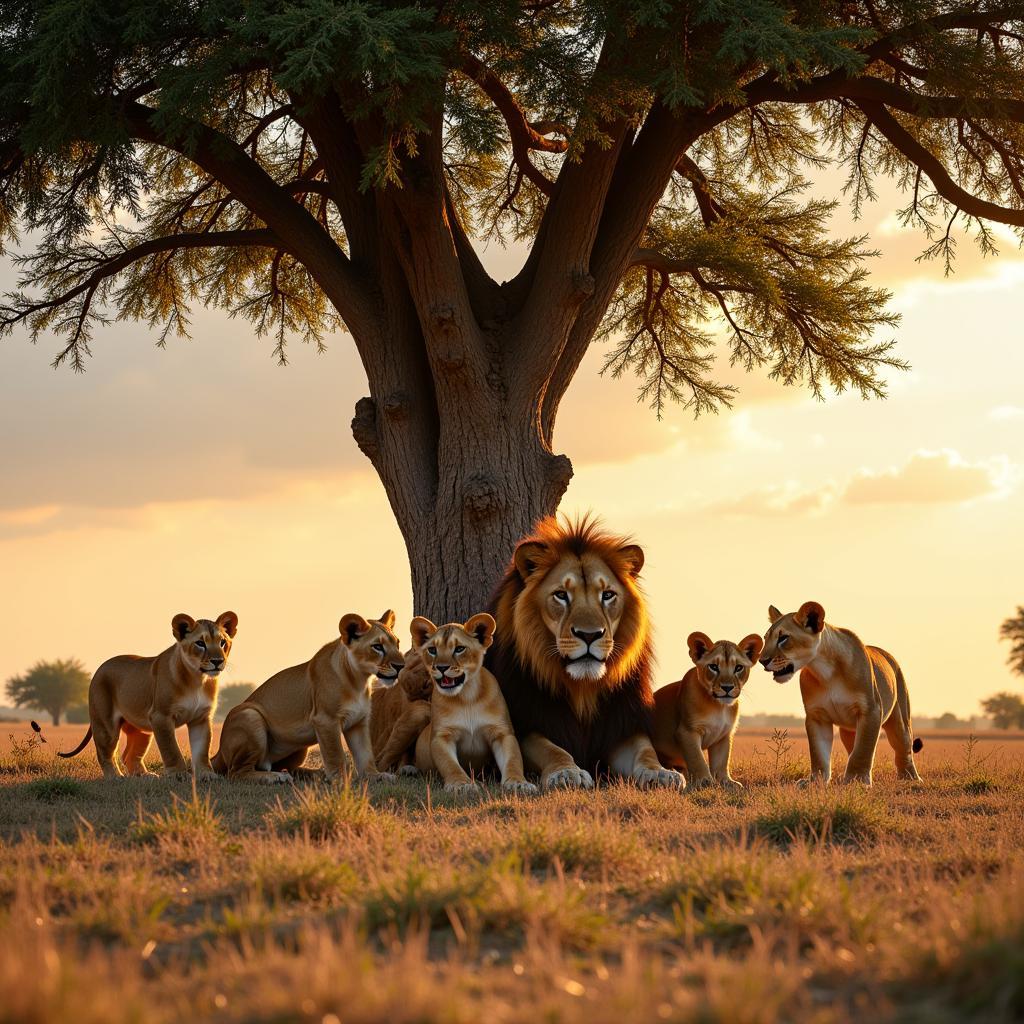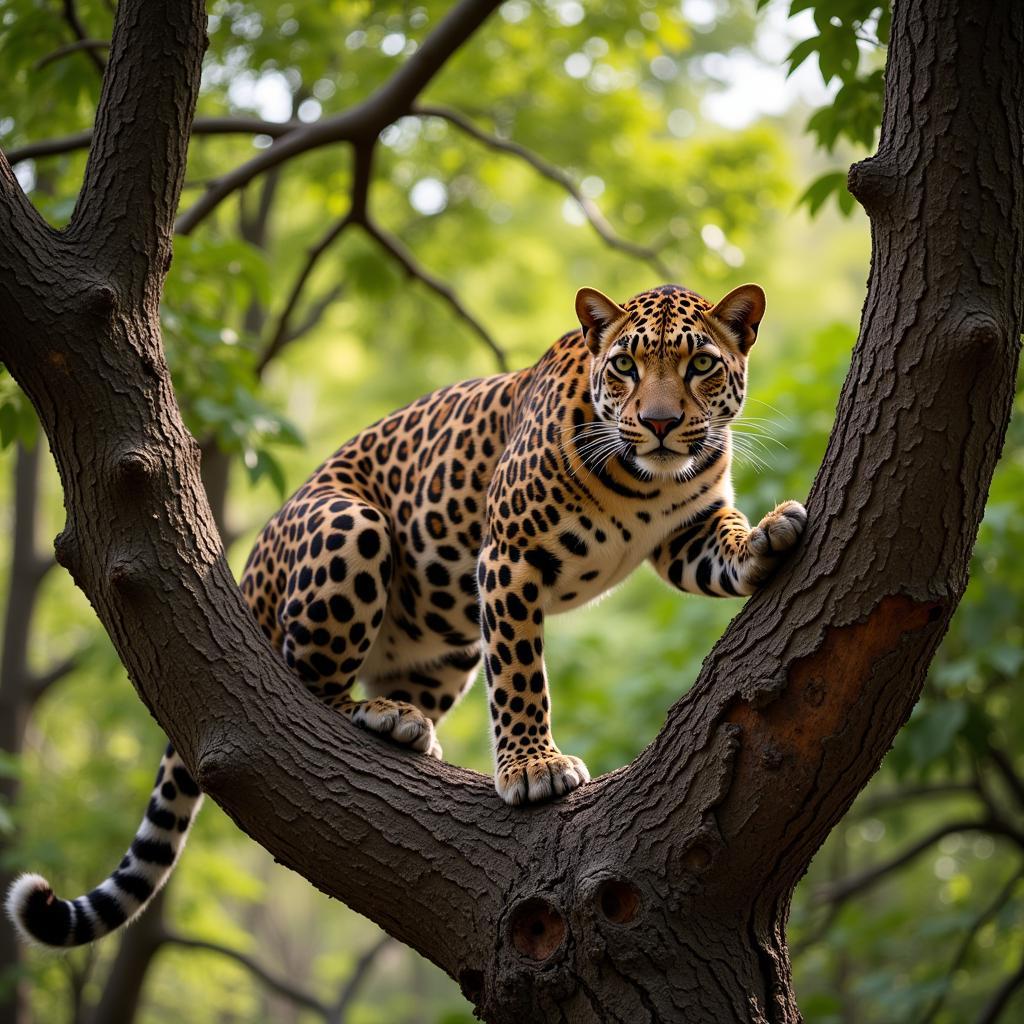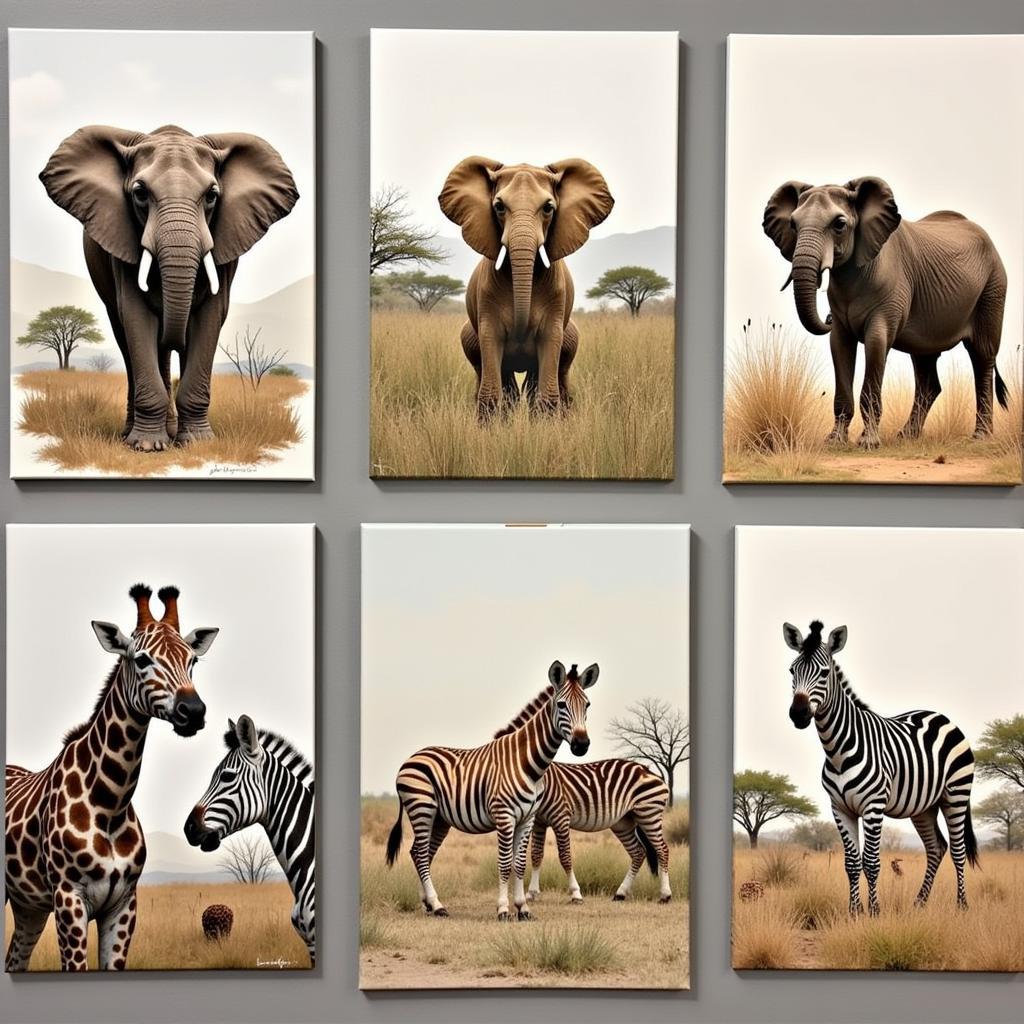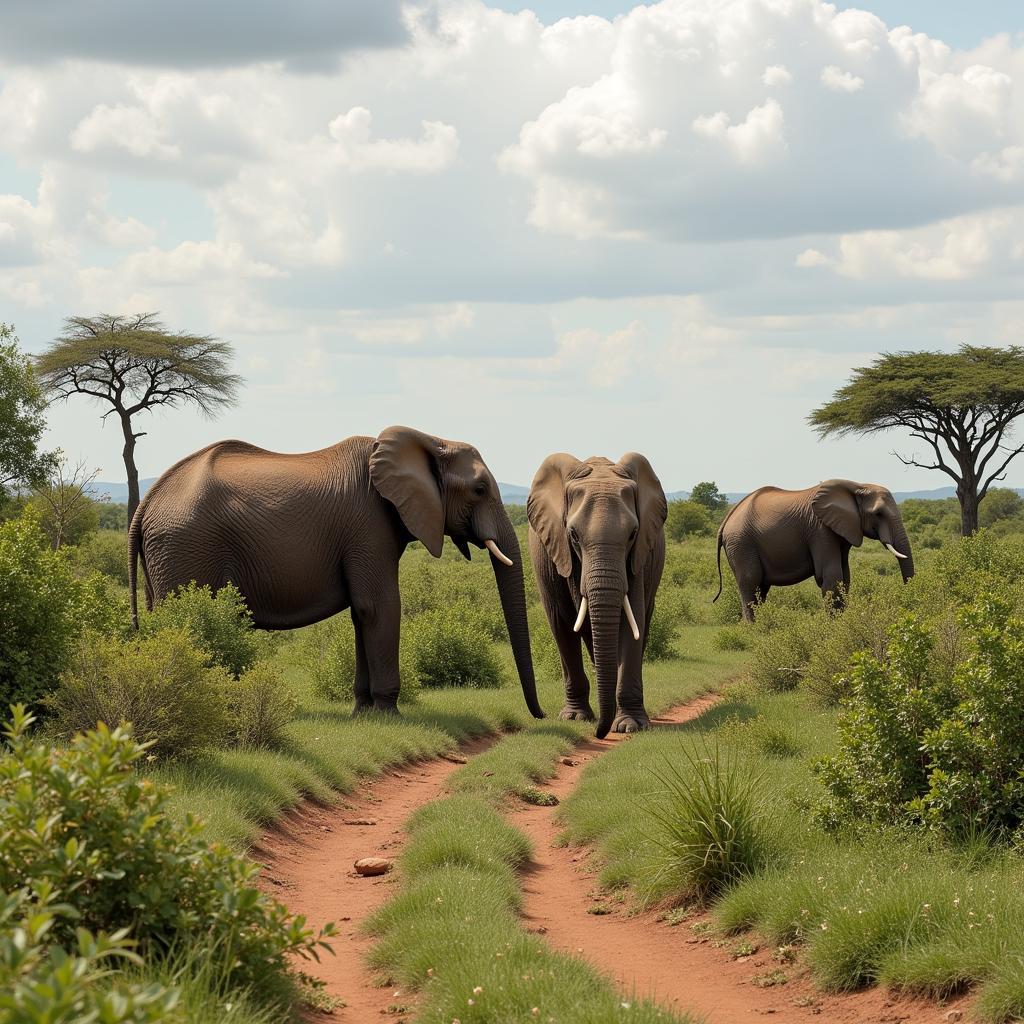10 African Animals You Should Know
Africa, a continent teeming with biodiversity, is home to a fascinating array of wildlife. From the majestic predators roaming the savannas to the elusive creatures of the rainforest, the continent boasts a remarkable collection of animals that capture the imagination. Here, we delve into the lives of ten iconic African animals, exploring their unique characteristics, habitats, and the challenges they face.
The African Elephant: Gentle Giant of the Savanna
The African elephant, the largest land mammal on Earth, is an icon of the African continent. These gentle giants, with their distinctive trunks, large ears, and imposing size, play a crucial role in maintaining the delicate balance of the savanna ecosystem. They are highly social animals, living in matriarchal herds led by experienced females. African elephants are known for their intelligence, empathy, and complex communication skills.
Threats to African Elephants
Despite their size and strength, African elephants face numerous threats, primarily from human activities. Poaching for ivory remains a significant challenge, pushing elephant populations to the brink in some regions. Habitat loss due to human encroachment and agriculture also poses a considerable threat to their survival.
 African Lion Pride Resting in the Shade
African Lion Pride Resting in the Shade
The African Lion: King of the Beasts
No list of African animals would be complete without the majestic African lion. Often referred to as the “king of the beasts,” the lion is a powerful predator that commands respect and awe. With their distinctive manes and thunderous roars, male lions are particularly impressive. Lions are social animals, living in prides consisting of related females, their cubs, and one or two adult males.
The Lion’s Roar: A Powerful Communication Tool
The lion’s roar is one of the most iconic sounds in the animal kingdom. It can be heard from miles away and serves various purposes, including territorial defense, communication within the pride, and intimidation of rivals.
 African Leopard Perched on a Tree Branch
African Leopard Perched on a Tree Branch
The African Leopard: Master of Stealth
The African leopard, a solitary and elusive creature, is a master of stealth and camouflage. Their spotted coats provide excellent camouflage in the dappled light of their forest and savanna habitats. Leopards are incredibly strong for their size, capable of dragging prey heavier than themselves up trees to keep it safe from scavengers. They are opportunistic hunters, with a diet that includes a wide variety of animals, from small antelopes to birds and reptiles.
Adaptability of the African Leopard
African leopards are highly adaptable animals, capable of thriving in a range of habitats, from dense forests to open grasslands. Their adaptability is a key to their survival, allowing them to exploit a variety of prey sources and cope with changing environmental conditions.
[african animal and plants]
The African Cheetah: Fastest Land Animal
The African cheetah is a sleek and elegant predator known for its incredible speed. As the fastest land animal on Earth, the cheetah can reach speeds of up to 70 miles per hour in short bursts. These speedsters are perfectly adapted for chasing down their prey, typically gazelles and other small to medium-sized antelopes, on the open savannas.
Challenges Facing the Cheetah
Despite their speed, cheetahs face several challenges, including competition from other predators, such as lions and leopards. Habitat loss and fragmentation due to human activities also pose significant threats to cheetah populations.
The African Wild Dog: Endangered Hunter
The African wild dog, also known as the painted dog, is a highly social and endangered predator. Their striking, multicolored coats make them easily recognizable. Wild dogs are incredibly efficient hunters, with a success rate that surpasses that of lions. They live in packs that work cooperatively to bring down prey, often much larger than themselves.
Conservation Efforts for African Wild Dogs
African wild dogs are facing a severe decline in numbers, primarily due to habitat loss, disease, and human-wildlife conflict. Conservation efforts are underway to protect remaining populations and their habitats.
The Black Rhinoceros: Armored Herbivore
The black rhinoceros, a critically endangered species, is an iconic symbol of African wildlife conservation. These large, solitary herbivores are characterized by their two horns, prehensile upper lips used for browsing, and thick, gray skin. Black rhinos are browsers, feeding on a variety of plants, including thorny bushes and acacia trees.
The Plight of the Black Rhino
The black rhinoceros has been decimated by poaching for its horn, which is highly valued in some cultures for its purported medicinal properties. Conservation efforts are focused on anti-poaching patrols, habitat protection, and education to combat the illegal wildlife trade.
[african amarula]
The African Buffalo: Powerful Grazer
The African buffalo, also known as the Cape buffalo, is a large and powerful herbivore found throughout sub-Saharan Africa. They are known for their impressive horns, which form a massive boss across their foreheads. African buffaloes are highly social animals, living in large herds that can number in the hundreds or even thousands.
The Role of the Buffalo in the Ecosystem
African buffaloes play an essential role in their ecosystem as grazers, maintaining the balance between grasslands and woodlands. Their dung also provides nutrients for a variety of insects, birds, and other animals.
The Giraffe: Towering Icon
The giraffe, the tallest mammal on Earth, is an iconic inhabitant of the African savanna. With their incredibly long necks, distinctive patterned coats, and towering height, giraffes are truly a sight to behold. They are browsers, feeding primarily on the leaves of acacia trees, which they can reach with their long tongues.
Adaptations of the Giraffe
Giraffes possess several remarkable adaptations, including their long necks, which allow them to reach high into the trees for food, and their powerful hearts, which are essential for pumping blood up their long necks to their brains.
The Zebra: Striped Wonder
The zebra, with its distinctive black and white stripes, is a highly recognizable and social animal found throughout eastern and southern Africa. Zebras are members of the horse family and are known for their speed and agility. They are grazers, feeding primarily on grasses.
The Purpose of Zebra Stripes
The purpose of zebra stripes is a subject of ongoing debate among scientists. Theories suggest that the stripes may serve as camouflage, a way to confuse predators, or a means of social recognition.
[african animal and type of some tree]
The Hippopotamus: River Giant
The hippopotamus, a large, semi-aquatic mammal, is found in rivers, lakes, and swamps throughout sub-Saharan Africa. They are known for their massive size, barrel-shaped bodies, and short legs. Hippopotamuses are herbivores, grazing on grasses at night.
The Importance of Hippos to Aquatic Ecosystems
Hippopotamuses play a crucial role in their aquatic ecosystems. Their dung provides nutrients for a variety of fish and other aquatic life. They also help to maintain the health of waterways by keeping vegetation in check.
Conclusion
These ten African animals represent a small fraction of the incredible biodiversity found on the continent. From the majestic elephant to the stealthy leopard, each animal plays a unique and vital role in their respective ecosystems. However, many of these animals face growing threats from human activities, including habitat loss, poaching, and climate change. It is our responsibility to protect these magnificent creatures and ensure their survival for generations to come.
FAQ
What is the largest African animal?
The African elephant is the largest African animal, with males weighing up to 6 tons.
What is the fastest African animal?
The cheetah is the fastest African animal, capable of reaching speeds of up to 70 miles per hour.
Why are African animals endangered?
Many African animals are endangered due to habitat loss, poaching, climate change, and human-wildlife conflict.
How can I help protect African animals?
You can help protect African animals by supporting conservation organizations, reducing your carbon footprint, and spreading awareness about the importance of wildlife conservation.
Where can I see these amazing animals?
Many national parks and reserves throughout Africa offer opportunities to see these animals in their natural habitats.
[african american ken barbie doll]
For any inquiries or assistance, please don’t hesitate to reach out to us.
Phone: +255768904061
Email: kaka.mag@gmail.com
Address: Mbarali DC Mawindi, Kangaga, Tanzania
Our dedicated customer support team is available 24/7 to assist you.

